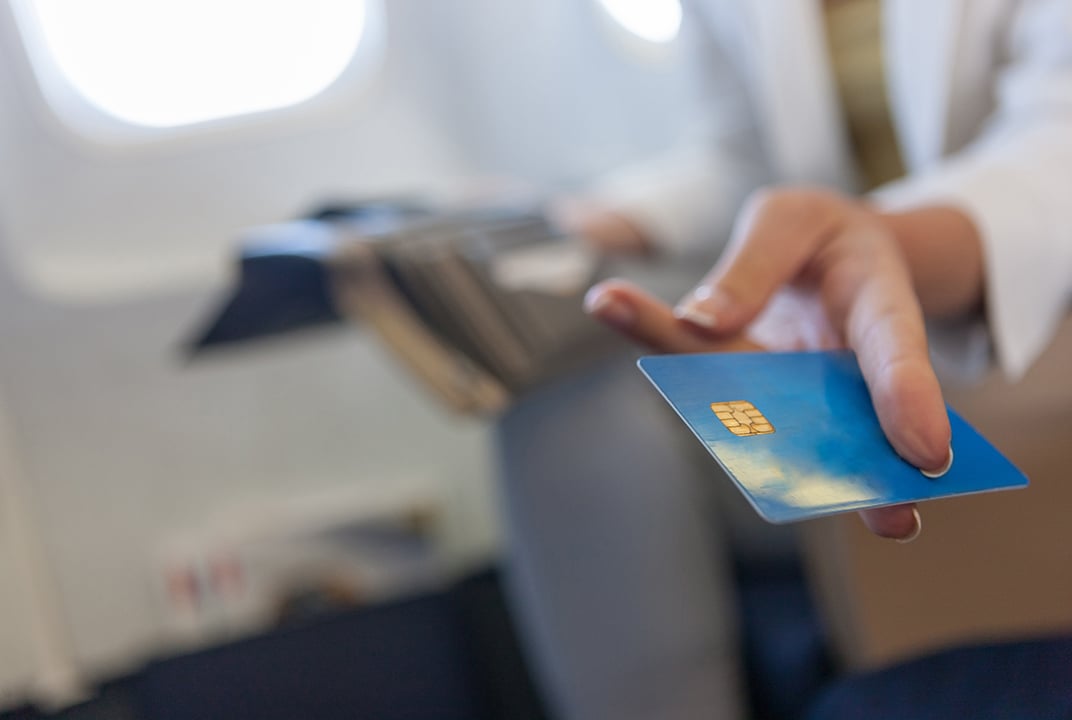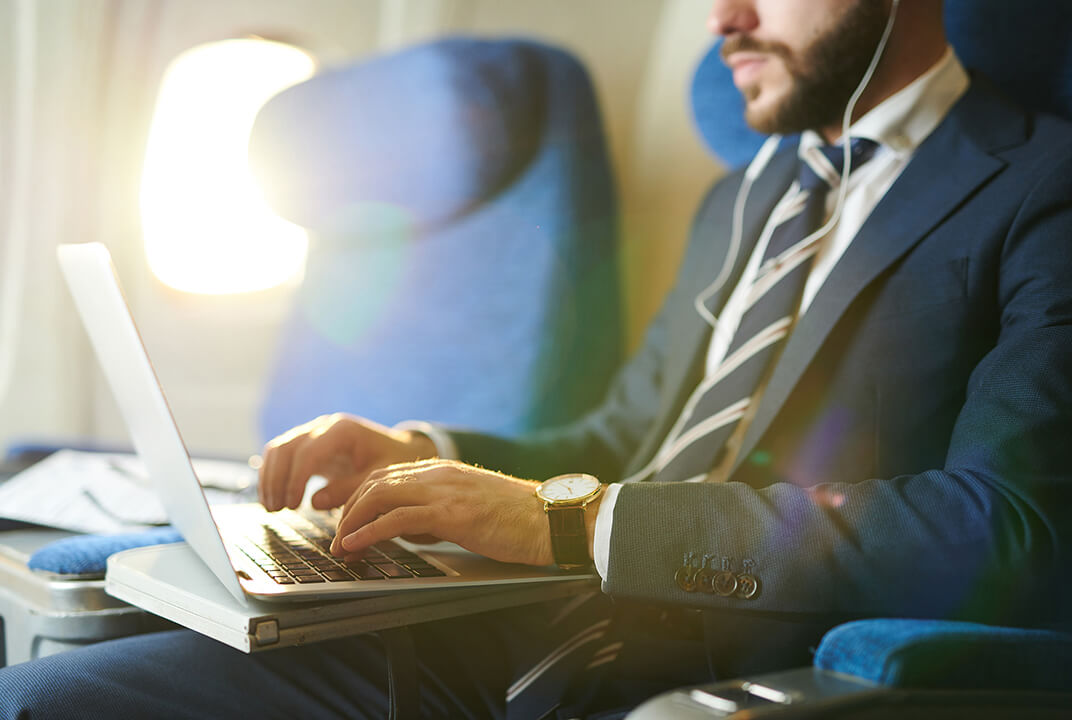Insight | Accelerate: Aviation 2017 – the debrief
Accelerate: Aviation 2017 – the debrief
null
Global C-suite aviation executives and international airlines with 40-plus carriers, representing over 25 countries, recently gathered in London to discuss opportunities and issues in an era of change. Here’s what happened
Accelerate: Aviation 2017 is a forum for airline and airport executives, together with aviation experts, to discuss emerging opportunities, issues and solutions in today’s rapidly changing aviation industry.
With topic discussions ranging from passenger experience to evolving business models, it’s a date firmly marked in the industry calendar.
We’ve compiled all that happened at the conference, with a focus on connectivity, into one handy debrief. If you missed the event or simply need to catch up, it’s all here.
Connectivity, and the many benefits that it brings, featured throughout the conference
David Coiley, VP External Affairs & Strategy at Inmarsat Aviation, said: “Connectivity is something that is now moving through every part of the airline. It is touching every activity that an airline undertakes; passenger experience, operations, safety.” Inmarsat call this the ‘complete connected aircraft’.
Guests heard about a new, groundbreaking study – a collaboration between Inmarsat and the London School of Economics (LSE) – that highlights the rise of broadband-enabled ancillary revenue.
Dr Alexander Grous, the LSE academic who compiled the report, revealed how different regions would benefit from inflight connectivity.
Of course, to take advantage of all this potential ancillary revenue, airlines first need connectivity.
“There are perhaps three types of airline,” explained Grous.
“One type of airline is sophisticated and already trialling inflight connectivity, testing the market – they are a minority. The next is the majority – they want to play in this space, they think they know what to do but they need guidance. The third airline admits they have no idea – they can only supply connectivity in the cockpit.”
However, the study indicates that airlines – and passengers – will care about far more than simple broadband access in the coming decades…
“The criteria we’ve been seeing coming out for years as to why passengers won’t pay for inflight connectivity is a lack of high quality broadband and good coverage, so that you don’t have Wi-Fi drop-outs.
“Airlines must offer passengers connectivity that stays consistent otherwise they’re just going to sit there and say, 'there’s nothing I can do on board this plane,’” said Grous.
How could connectivity transform IFE?
Are seatback screens a thing of the past now that inflight connectivity has arrived?
“People thought BYOD (bring your own device) would kill the IFE screen,” said Juha Jarvinen, CCO of Finnair and Board VP at APEX.
“But remember, at home you use multiple devices. Passengers multitask. That is where airlines see the benefit of a seatback screen.
“IFE is reaching a new level of focus. Some airlines are investing in 32” screens – the screens are getting bigger, tech is improving, you can now create a new type of experience. You can’t look at IFE in isolation, it’s part of a journey. So how do you best provide that service in the journey, for example, combining apps with screens?
“Airlines are providing more opportunities to continue using the content in the same way you do at home. For example, stopping the movie and then watching later. Your experience as a passenger shouldn’t be any different to what you do at home,” said Jarvinen.
Inflight retail is set for transformation too
“Retail is the biggest area of unexplored territory,” said Juha Jarvinen.
“It’s an area in which airlines are still trying to crack the code. We’re seeing airlines bringing services you use on the ground into the air – Netflix, Amazon, Disney.”
Stephany van Willingenburg, Industry Head of Travel for Google, pointed out that passengers are mobile-first – it’s the most common device brought on board.
“60% of travel searches begin with mobile. A lot of searches are about what’s happening ‘near me’ – a hotel tonight, a train to Paris today, flights to Berlin this afternoon.”
She explained that these are all searches that could very well happen at 30,000ft before reaching the aircraft’s destination.
But website load speed is also relevant. Van Willingenburg adds: “The average mobile website loads in about 10 seconds – but the travel industry is behind. You are competing with the best experience a consumer has ever had. Consumers get very picky after about three seconds.”
It’s essential that inflight broadband is fast – on top of being consistent.
What’s more, since e-commerce in the sky is a real possibility with the dawn of reliable IFC, there may also be opportunities for airlines to seed inflight transactions into loyalty programmes.
Steven Greenway Deputy CEO at U-Fly and CEO of Reward-U, noted: “Loyalty is about integrating with the airline. Right now, airlines only recognise you if you fly with them. But what about other interactions?”
This could be whenever you use an airline credit card, perhaps even on board as you fly.
There is much talk of passenger personalisation in the industry as connectivity reveals new opportunities, using big data, to tailor the passenger experience
“The next step is personalising the advertising onboard. You’d have a set of ads for China, a set for London and so on. Of course, we need standards to make this happen across the industry and that’s something we at APEX are looking at,” said Juha Jarvinen.
“It’s just like downloading an iPhone app – you take on what you want and ditch what you don’t need. That’s how consumers are behaving today,” said Akira Mitsumasu, VP Marketing & Strategy in Asia & Oceania at Japan Airlines.
But Juha Jarvinen flagged an important point about personalisation – what about passenger privacy?
“We can personalise IFE screens but then it’s a question of privacy. Does someone want their name on their seatback screen? People are quite comfortable to give data – so long as it’s not to an individual (like the person sitting next to them). They are selective as to who gets their data.”
Roland Jaggi, Director Revenue Management, Pricing, Sales & Distribution at Aegean Airlines thought personalisation may be a bit too ‘ambitious’.
“Let’s make it relevant instead, using what we know about our passengers. Relevant ticket offers to certain passengers, like including free cancelation, two free hold bags, priority boarding – all in one ticket price. Then another passenger would get something else.”
It’s clear that aviation’s connectivity revolution brings with it much that bears further discussion. For now, Inmarsat continues to lead the way in putting high-speed, reliable, global broadband in cabins and cockpits around the world. For all the latest news and insights, stay connected with Inmarsat.


